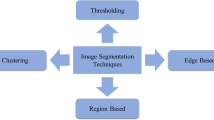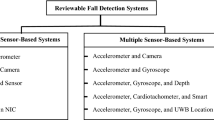Abstract
In this paper, an efficient target classification and fusion scheme for wireless sensor networks (WSNs) is proposed and evaluated. When a classification algorithm for WSN nodes is designed, parametric approaches such as Gaussian mixture model (GMM) should be more preferred to non-parametric ones due to the hard limitation in resources. The GMM algorithm not only shows good performances for target classification in WSNs but it also requires very small resources. Based on the classifier, a decision tree generated by the classification and regression tree algorithm is used to fuse the information from heterogeneous sensors. This node-level classification scheme provides a satisfactory classification rate, 94.10%, with little resources. Finally, a confidence-based fusion algorithm improves the overall accuracy by fusing the information among sensor nodes. Our experimental results show that the proposed group-level fusion algorithm improves the accuracy by an average of 4.17% accuracy with randomly selected nodes.







Similar content being viewed by others
References
Duarte M, Hu Y-H (2004) Vehicle classification in distributed sensor networks. J Parallel Distribut Comput 64(7):826–838
Meesookho C, Narayanan S, Raghavendra CS (2002) Collaborative classification applications in sensor networks. In: Second IEEE sensor array and multichannel signal processing workshop, pp 370–374
Li D, Wong KD, Hu YH, Sayeed AM (2002) Detection, classification and tracking of targets in distributed sensor networks. IEEE Signal Processing Magazine, pp 17–29
Brooks RR, Griffin C, Friedlander D (2003) Distributed target classification and tracking in sensor networks. Proc IEEE, pp 1163–1171
Arora A et al (2004) A line in the sand: a wireless sensor network for target detection, classification, and tracking. Comput Networks J 46(5):605–634
Dasarathy BV (1990) Nearest neighbor: pattern classification techniques. IEEE Comput Soc. ISBN 0-8186-8930-7
Burges CJC (1998) A tutorial on support vector machines for pattern recognition. Data Mining Knowledge Discovery 2:121–167
Duarte M, Hu Y (2004) Distance based decision fusion in a distributed wireless sensor network. Telecomm Syst 26:339–350
Klein LA (2004) Sensor and data fusion. SPIE. ISBN 0-8194-5435-4
Reynolds DA, (1992) Gaussian mixture modeling approach to text-independent speaker identification. Ph.D. thesis, Georgia Institute of Technology
Breiman L, Friedman J, Olshen R, Stone C (1984) Classification and regression trees. Wadsworth, CA
Kay SM (1993) Fundamentals of statistical signal processing: estimation theory. Prentice Hall, NJ. ISBN 0-13-345711-7
Zheng F, Zhang G, Song Z (2001) Comparison of different implementations of MFCC. J Comput Sci Technol 16(6):582–589
Falk TH, Chan WY (2005) A sequential feature selection algorithm for GMM-based Speech Quality Estimation, European Signal Processing Conference
Xuan G, Zhang W, Chai P (2001) EM algorithms of Gaussian mixture model and hidden markov model. In: Proceedings of the international conference on image processing, pp 145–148
Duda RO, Hart PE, Stork DG (2000) Pattern classification, 2nd edn. John-Wiley, pp 282–347
Loh W-Y, Nunta Vanichsetakul N (1988) Tree-structured classification via generalized discriminant analysis. J Am Stat Associat 83(403):715–728
Acknowledgments
This research was supported by the MKE (Ministry of Knowledge Economy), Korea, under the ITRC (Information Technology Research Center) support program supervised by the IITA (Institute of Information Technology Advancement) (IITA-2008-C1090-0801-0047) and the Korea Science and Engineering Foundation (KOSEF) grant funded by the Korea government(MOST) (No. R0A-2007-000-10038-0)
Author information
Authors and Affiliations
Corresponding author
Rights and permissions
About this article
Cite this article
Kim, Y., Jeong, S., Kim, D. et al. An efficient scheme of target classification and information fusion in wireless sensor networks. Pers Ubiquit Comput 13, 499–508 (2009). https://doi.org/10.1007/s00779-009-0225-8
Received:
Accepted:
Published:
Issue Date:
DOI: https://doi.org/10.1007/s00779-009-0225-8




